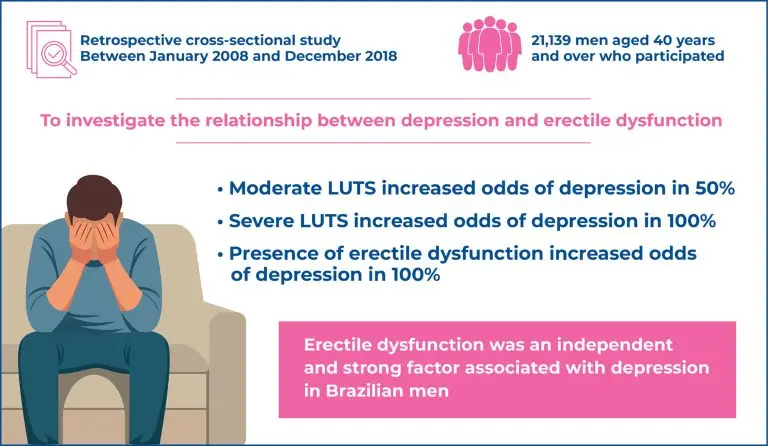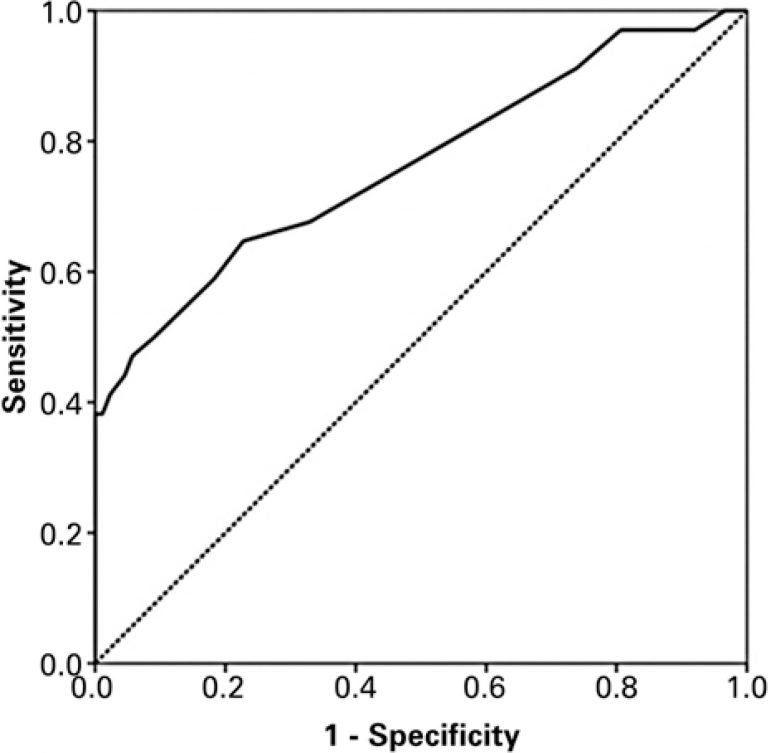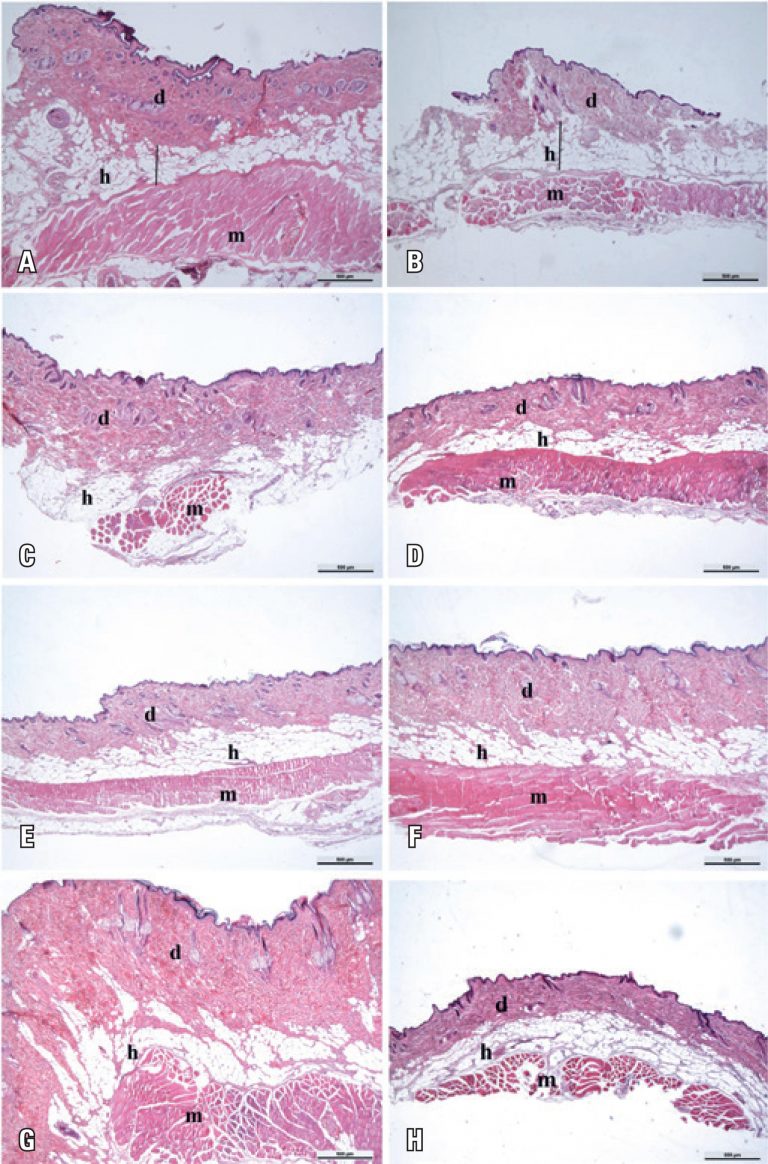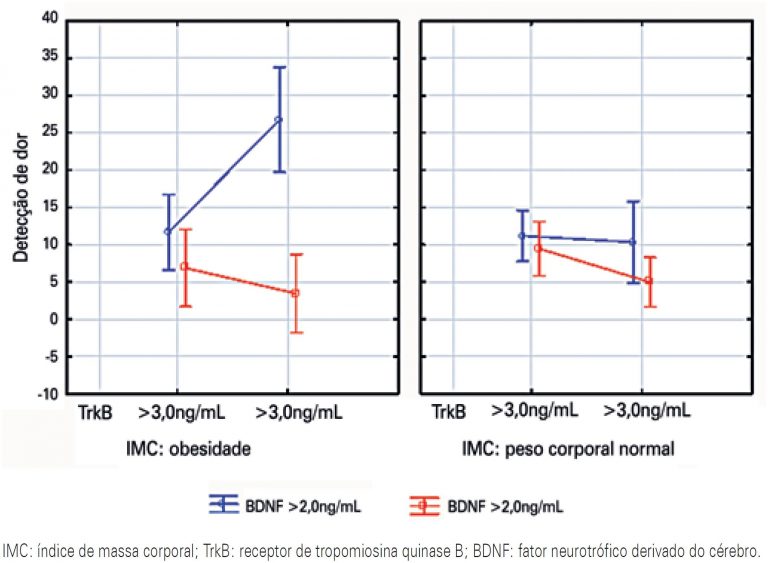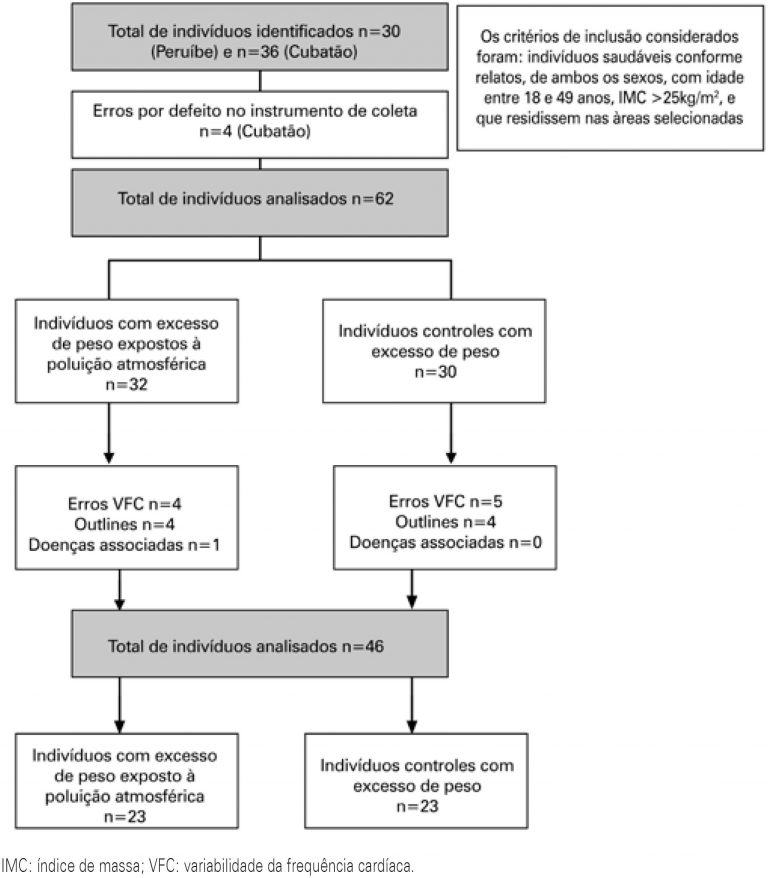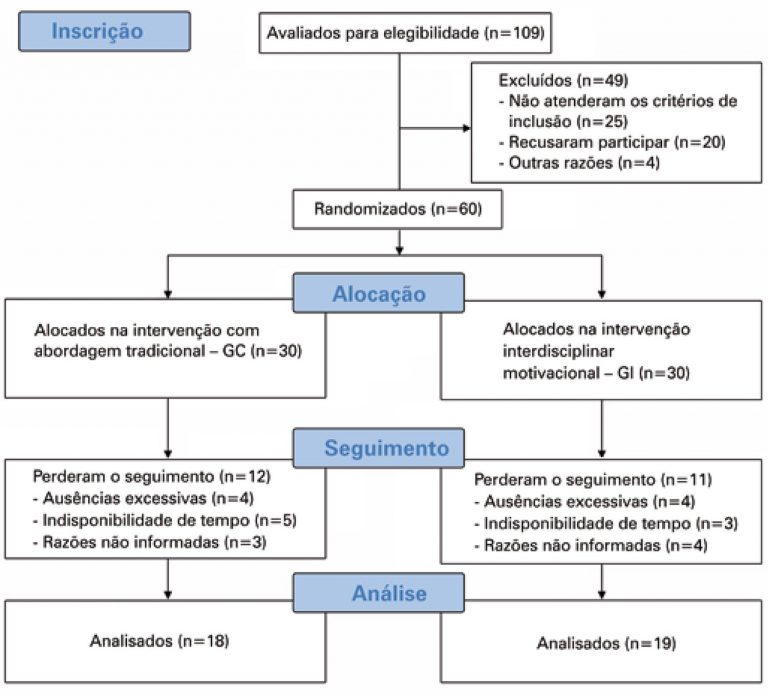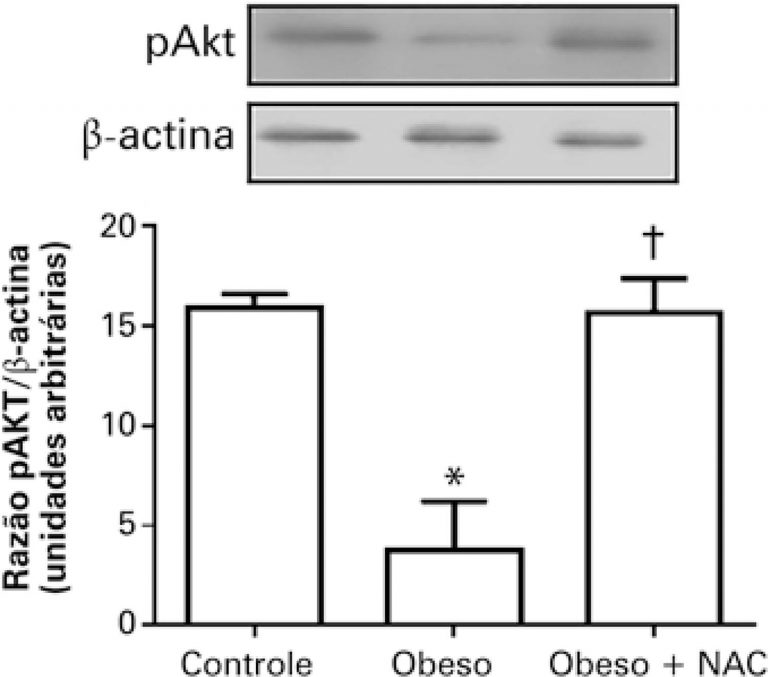25/nov/2024
The association between erectile dysfunction and depression: a cross-sectional study of 21,139 Brazilian men
DOI: 10.31744/einstein_journal/2024AO1063
Highlights Levels of lower urinary tract symptoms increased the risk of depression. Erectile dysfunction, alcohol consumption, and body mass index were associated with an increased likelihood of depression. ABSTRACT Objective: This study aimed to investigate the relationship between depression and erectile dysfunction while controlling for sociodemographic, physical health, psychological, and lifestyle factors. Additionally, it aimed to compare erectile dysfunction with other clinical, laboratory, and behavioral variables among individuals with depression in the same population. Methods: We included 21,139 men (≥40 […]
Palavras-chave: Depressão; Disfunção erétil; Exercício; Estilo de vida; Obesidade
28/ago/2024
Swimming training prevents obesity installation and normalizes hypothalamic expressions of GLP1 and leptin receptors in adult offspring born in small litters
einstein (São Paulo). 28/ago/2024;22:eAO0619.
Ver Artigo28/ago/2024
Swimming training prevents obesity installation and normalizes hypothalamic expressions of GLP1 and leptin receptors in adult offspring born in small litters
DOI: 10.31744/einstein_journal/2024AO0619
Highlights Small-litter promotes greater body weight gain, adiposity, and metabolic abnormalities in adulthood. Small-litter -adult obese rats showed augmented hypothalamic expression of GLP1-R and Lep-R. Swimming training throughout life avoids obesity and metabolic disorders in small-litter-adult rats. Regular exercise can normalize GLP1-R and Lep-R hypothalamic expressions in small-litter-adult rats. ABSTRACT Objective: Glucagon-like peptide-1 (GLP1) and leptin (Lep) are afferent signals that regulate energy metabolism. Lactational hypernutrition results in hyperphagia and adiposity in adult life, and these events can be prevented […]
Palavras-chave: Exercício; Hypothalamus; Metabolic reprogramming; Obesidade; Swimming
20/maio/2022
Prognostic factors of worse outcome for hospitalized COVID-19 patients, with emphasis on chest computed tomography data: a retrospective study
einstein (São Paulo). 20/maio/2022;20:eAO6953.
Ver Artigo20/maio/2022
Prognostic factors of worse outcome for hospitalized COVID-19 patients, with emphasis on chest computed tomography data: a retrospective study
DOI: 10.31744/einstein_journal/2022AO6953
ABSTRACT Objective: To evaluate anthropometric and clinical data, muscle mass, subcutaneous fat, spine bone mineral density, extent of acute pulmonary disease related to COVID-19, quantification of pulmonary emphysema, coronary calcium, and hepatic steatosis using chest computed tomography of hospitalized patients with confirmed diagnosis of COVID-19 pneumonia and verify its association with disease severity. Methods: A total of 123 adults hospitalized due to COVID-19 pneumonia were enrolled in the present study, which evaluated the anthropometric, clinical and chest computed tomography data […]
Palavras-chave: Infecções por coronavírus; COVID-19; Tomografia computadorizada multidetectores; Obesidade; Pneumonia; Prognóstico; Funções verossimilhança; X-ray computed
20/maio/2022
Effects of topiramate, bupropion and naltrexone isolated or combined on subcutaneous adipose tissue in obese rats
DOI: 10.31744/einstein_journal/2022AO5587
ABSTRACT Objective: To evaluate the effects of combining topiramate, bupropion and naltrexone in obesity-induced rats on their weight and subcutaneous adipose tissue. Methods: A total of 40 male Wistar rats were induced to obesity for 8 weeks and the animals were divided into 8 groups: Ctr – control, G0 – Sham, G1 – oral saline solution (1.0mL/day), G2 – topiramate (20.0mg/kg) and bupropion (5.0mg/kg), G3 – naltrexone (20.0mg/kg), G4 – topiramate (20.0mg/kg), G5 – bupropion (5.0mg/kg) and G6 – topiramate […]
Palavras-chave: Peso corporal; Bupropion; Naltrexone; Obesidade; Rats; Subcutaneous fat; Topiramate
08/fev/2022
Maternal and early childhood factors associated with asthma and obesity in children aged 6 to 7 years: a case control study
DOI: 10.31744/einstein_journal/2022AO5609
ABSTRACT Objective To determine the maternal and early childhood factors associated with asthma and obesity in children aged 6 to 7 years. Methods A case-control study conducted with children aged 6 to 7 years. Applications with questions about asthma symptoms in the last 12 months, maternal and childhood data in the first 2 years of life, and anthropometric data were collected. Children who presented asthma symptoms were considered as cases and those without asthma symptoms were considered as controls, later […]
02/fev/2022
Clustering of behavioral risk factors for chronic noncommunicable diseases in climacteric women
DOI: 10.31744/einstein_journal/2022AO6153
ABSTRACT Objective To estimate the prevalence of clustering of behavioral risk factors for chronic non-communicable diseases, as well as the associated factors in climacteric women. Methods This is a cross-sectional, analytical study, with random selection of climacteric women, aged between 40 and 65 years, and registered in Family Health Strategy units. The dependent variable was clustering of three or more behavioral risk factors for chronic non-communicable diseases. The definition of associated variables was made after Poisson multiple regression analysis with […]
Palavras-chave: Climacteric; Disease prevention; Comportamentos relacionados com a saúde; Noncommunicable diseases; Obesidade; Retardo do crescimento fetal; Mulheres; Saúde da mulher
17/set/2021
Sinalização mediada pelo receptor de tropomiosina quinase tipo B na integração de dor neuropática e obesidade na polineuropatia diabética
einstein (São Paulo). 17/set/2021;19:eAO6256.
Ver Artigo17/set/2021
Sinalização mediada pelo receptor de tropomiosina quinase tipo B na integração de dor neuropática e obesidade na polineuropatia diabética
DOI: 10.31744/einstein_journal/2021AO6256
RESUMO Objetivo: Avaliar os níveis séricos quantitativos do receptor da tropomiosina quinase B, e estimar sua associação com os níveis séricos do fator neurotrófico derivado do cérebro e a obesidade, em pacientes com formas dolorosas e indolores de polineuropatia. Métodos: Examinamos 70 pacientes com polineuropatia diabética, com disfunção de nervo periférico confirmada por eletroneuromiografia e medida de níveis séricos do receptor da tropomiosina quinase B e do fator neurotrófico derivado do cérebro, por imunoensaio enzimático. Polineuropatia diabética foi diagnosticada através […]
Palavras-chave: Fator neurotrófico derivado do encéfalo; Neuropatias diabéticas; Obesidade; Receptor, trkB
26/nov/2020
Efeito da poluição atmosférica na modulação autonômica da frequência cardíaca em indivíduos com excesso de peso
einstein (São Paulo). 26/nov/2020;18:eAO5100.
Ver Artigo26/nov/2020
Efeito da poluição atmosférica na modulação autonômica da frequência cardíaca em indivíduos com excesso de peso
DOI: 10.31744/einstein_journal/2020AO5100
RESUMO Objetivo: Analisar o efeito da poluição atmosférica na variabilidade da frequência cardíaca em indivíduos com excesso de peso. Métodos: Foram analisados 46 indivíduos adultos, de ambos os sexos, com idade entre 18 e 49 anos e índice de massa corporal >25kg/m2. Todos os voluntários eram estudantes da Educação de Jovens e Adultos em duas cidades do estado de São Paulo. Foram coletadas informações clínicas, demográficas e antropométricas de cada indivíduo, bem como a variabilidade da frequência cardíaca, por meio […]
Palavras-chave: Frequência cardíaca; Obesidade; Poluição ambiental; Poluição do ar; Sistema cardiovascular; Sistema nervoso autonômo; Sobrepeso
13/maio/2020
Efeito de intervenção interdisciplinar com abordagem motivacional na capacidade de exercício em adolescentes obesos: ensaio clínico controlado randomizado
einstein (São Paulo). 13/maio/2020;18:eAO5268.
Ver Artigo13/maio/2020
Efeito de intervenção interdisciplinar com abordagem motivacional na capacidade de exercício em adolescentes obesos: ensaio clínico controlado randomizado
DOI: 10.31744/einstein_journal/2020AO5268
RESUMO Objetivo Avaliar o efeito de uma intervenção interdisciplinar com abordagem motivacional na capacidade de exercício e no nível de atividade física habitual em adolescentes com sobrepeso e obesidade. Métodos Trata-se de ensaio clínico controlado, randomizado, com cegamento único dos indivíduos. Foram incluídos adolescentes com idade entre 15 e 18 anos, com sobrepeso e obesidade (índice de massa corporal ≥ percentil 85). Os adolescentes foram randomizados em dois grupos: intervenção interdisciplinar motivacional ou controle − abordagem tradicional, visando à modificação […]
Palavras-chave: Adolescente; Entrevista motivacional; Exercício físico; Motivação; Obesidade; Sobrepeso
13/mar/2020
Redução do estresse oxidativo melhora a sinalização da insulina em tecido cardíaco de camundongos obesos
DOI: 10.31744/einstein_journal/2020AO5022
RESUMO Objetivo Avaliar os efeitos do estresse oxidativo sobre a sinalização da insulina em tecido cardíaco de camundongos obesos. Métodos Utilizaram-se 30 camundongos Swiss subdivididos igualmente (n=10) em três grupos: Grupo Controle, Grupo Obeso e Grupo Obeso Tratado com N-acetilcisteína. Após estabelecidas a obesidade e a resistência à insulina, os camundongos obesos foram tratados diariamente, durante 15 dias, via gavagem oral, com N-acetilcisteína na dose de 50mg/kg. Resultados Observaram-se maiores níveis de glicose sanguínea, conteúdos de nitrito e carbonil, e […]
Palavras-chave: Camundongos; Estresse oxidativo; Miocárdio; Obesidade; Resistência à insulina


